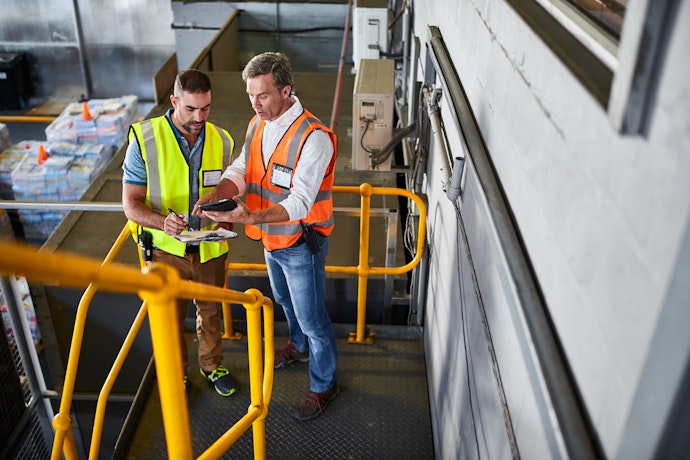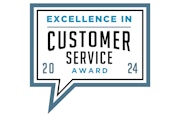How Smart Video Fuels Smart Business
Learn how video solutions with intelligent analysis capabilities can help benefit your drivers and enhance safety programs.
Read more
It’s actually a convergence of telecommunications and information processing — telecommunication meets informatics. The data captured by a telematics system can include vehicle location, speed, idling time, harsh acceleration or braking, fuel consumption, vehicle faults and more.
The data analyzed can show events and patterns that provide in-depth insights across the entire fleet, helping you better understand how to improve efficiency, driver performance and fuel consumption, all while lowering overall operating costs.
With the right telematics system, fleet owners can monitor their entire fleet of vehicles, regardless of their location, and have access to an entire dashboard of near real-time updates directly from a computer or mobile app. This visibility into the fleet allows supervisors to react quickly to incidents like hard braking, harsh cornering, and idling, and to put into place proactive solutions that help maintain vehicle performance and operational efficiency at a high level.
Thanks to telematics solutions, fleet managers can have increased oversight of their drivers without becoming overly invasive or micromanaging them. Vehicle monitoring helps to prioritize driver safety, which can lead to a decrease in moving violations. By reducing the risk of accidents and violations, fleet telematics can potentially lower insurance premiums, in addition to creating better driving habits on the road.
Your fleet is a representation of your company, and the behavior of your drivers reflects on you. That's why it's so important that drivers behave appropriately behind the wheel. With increased oversight into driving behavior, managers and business owners can rest easier knowing that they are informed about their drivers’ behavior and fleet vehicle activity.
With routing optimization, fleet managers have access to details about where their vehicles are and where they’re headed. This way managers and business owners are able to send the closest vehicle via the most direct route to the destination. As a result of more efficient dispatching, businesses reduce the number of miles driven and prevent unnecessary wear and tear. When trucks can cut down on mileage, fleet owners may be able to save on fuel costs and potentially extend the life of their vehicles.
There are two kinds of maintenance — planned and unplanned. Telematics can help with both. Telematics automates the tracking of vehicle maintenance and allows fleet managers to schedule planned maintenance activities at a time that has the least impact on productive work.
Alerts can be scheduled to perform regular maintenance activities, and fleet managers can proactively track vehicle health in near real time around oil temperatures, fluid levels, tire pressure, the presence of water in diesel and more. In this way, problems can often be diagnosed before a more expensive situation occurs.
Telematics can also signal when a vehicle issue arises outside of planned maintenance, and alerts can be sent to warn if a vehicle is operating outside of usual parameters.
Fuel is one of the largest fleet operating expenses. With a telematics solution, fleet managers can gain detailed insight and visibility into a number of key areas that have a big impact on fuel use.
Unauthorized use: Unauthorized vehicle use equals unauthorized fuel use. Corporate fuel cards can be tied to specific vehicles via telematics to identify if a fuel card has been used without an accompanying work vehicle.
There are a number of compliance mandates that can impact fleet operations. Telematics can help fleets simplify compliance, including around the electronic logging device (ELD) mandate.
Hours of service (HOS) reporting requires drivers to keep track of, and drive within, certain time limits. The ELD mandate was put forth by Congress, and the ELD final rule was created by the Federal Motor Carrier Safety Administration (FMCSA) to help reduce HOS errors and improve the overall logging of hours. Using an FMCSA-approved ELD device in conjunction with fleet tracking technology can help improve fleet performance.
For fleets, dashcams can be particularly useful in promoting safety and protecting a company’s bottom line. When integrated into an overall telematics solution, the benefits multiply. In particular, integrated video for fleet dashcams can help:
Is a telematics solution expensive? It depends on the solution. Bare-bones GPS tracking on a map is a relatively cheap option but provides very little actionable insight. Coupling a fully integrated telematics solution with other technologies such as ELDs, dashcams, smart route planning, and advanced driver management costs more up front but provides a much bigger ROI.
Better fleet visibility helps managers take stock of what a fleet has and how it’s being used. Customizable dashboards can make it easy to review progress toward KPIs or budgets, with near real-time fleet analytics provided by the fleet tracking system. In the long term, GPS fleet tracking can help uncover hidden costs while revealing potential for greater productivity and efficiency throughout an entire organization, making it well worth the investment.
To learn more about how telematics can help you achieve your fleet optimization goals, download our eBook What is Telematics?
Tags: Cost control, Customer Service, Routing




Find out how our platform gives you the visibility you need to get more done.
Learn how video solutions with intelligent analysis capabilities can help benefit your drivers and enhance safety programs.
Read moreAre you ready for vehicle tracking? Go through our checklist to learn the signs you’re ready to add fleet tracking to...
Read moreTechnology adoption helps fleets navigate operational obstacles. Learn what fleet management industry technology trends...
Read moreLearn how telematics can lead to operational improvements.
Read more
Get your free 2024 Fleet Technology Trends Report and see how organizations are: